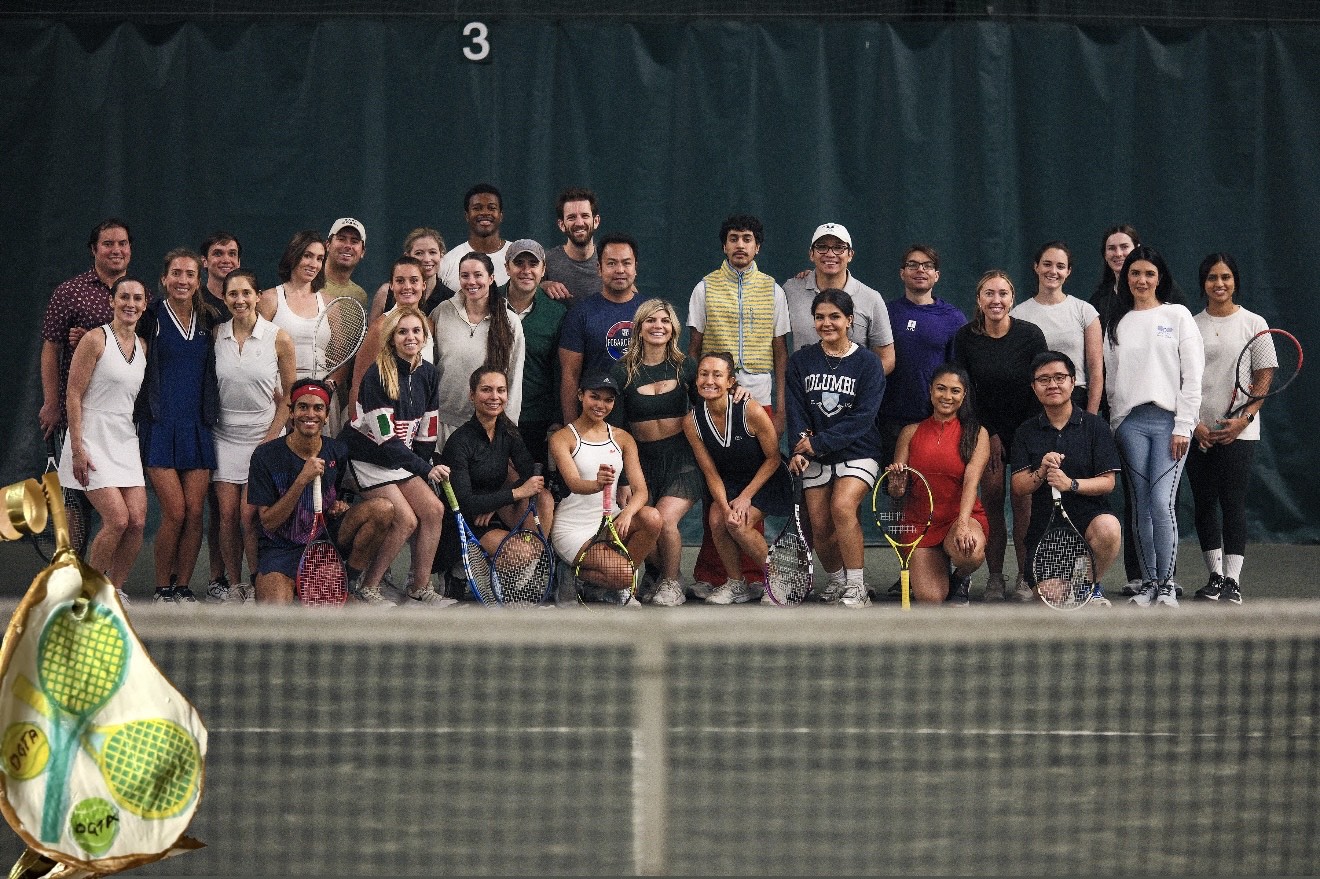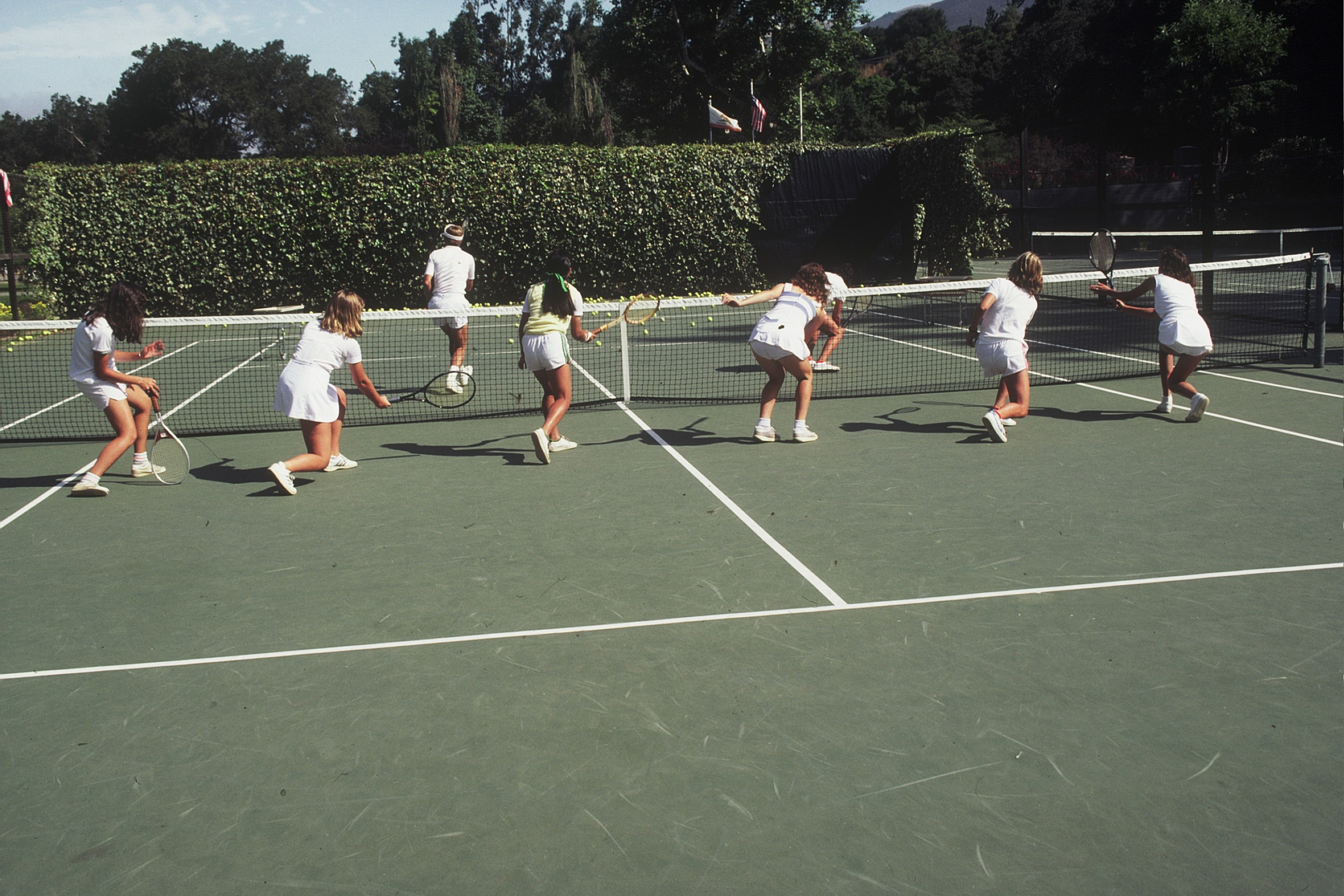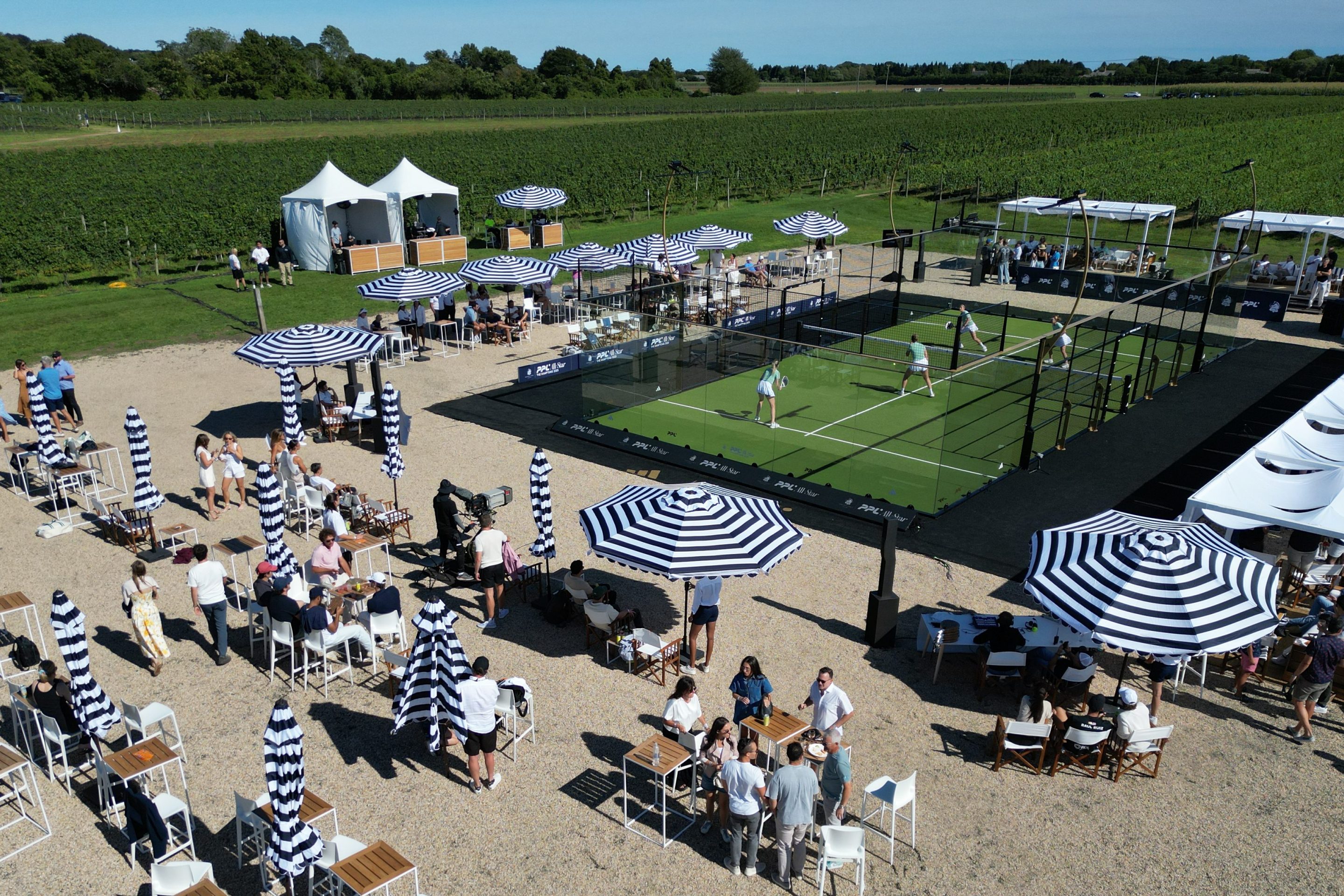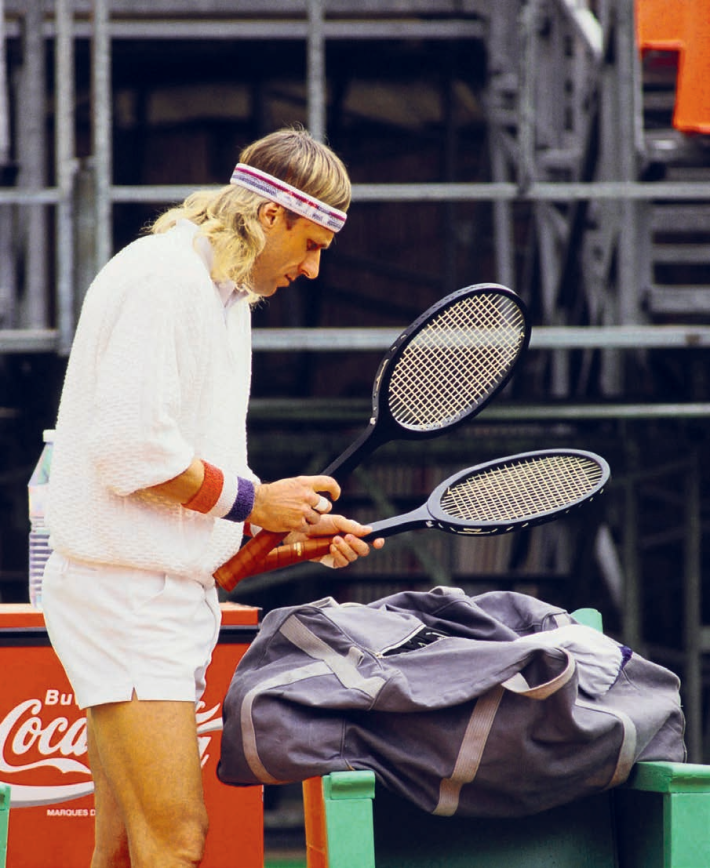
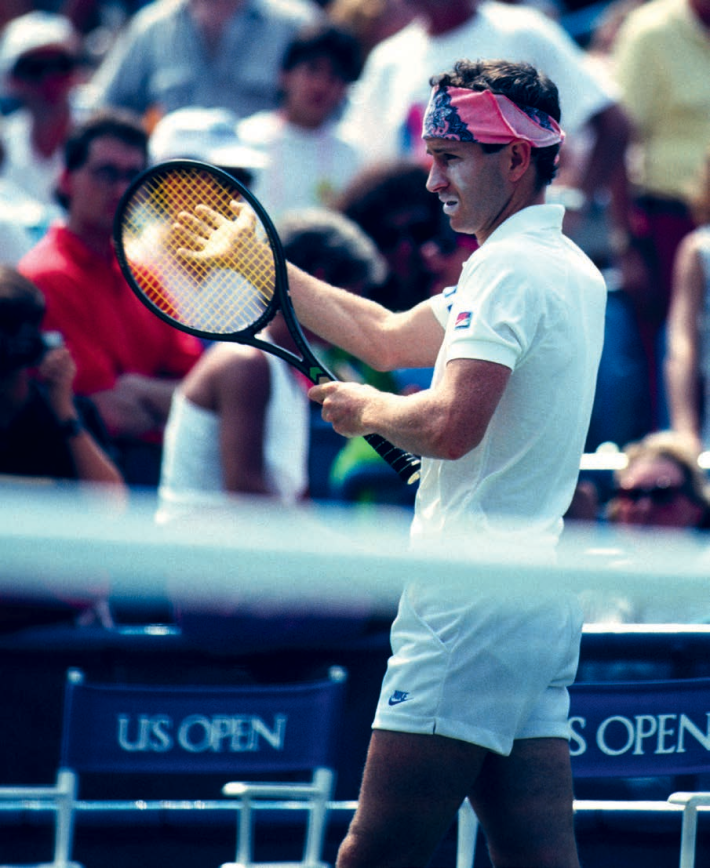
Bjorn Borg’s post-career life was a cautionary tale about the hazards of mixing fame, youth, boredom, and an estimated $75 million fortune. After burning out on tennis, he tried rally car driving; he tried commentating; he started and folded a sportswear company; he lent his name to a line of aftershave; he partied. Only the latter activity lasted for long.
“He didn’t know what to do; he didn’t know his place,” his first wife, Mariana, told Sports Illustrated’s Curry Kirkpatrick. “It was so sad. Bjorn would watch TV, then go out with the night people. He wanted to have another life, but he’d say, ‘What am I going to do now?’”
What Borg did was ask Mariana for a divorce over the phone and father a son with a teenage model he met while judging a beauty contest. A few years later, he married Loredana Bertè, an Italian pop singer whose bestknown hit was called “I’m Not a Lady.” The low point of Borg’s decadelong descent had to be when he was rushed to a Milan hospital to have his stomach pumped after allegedly taking too many sleeping pills. Where else could he go but back to the only home he had ever known, professional tennis?
In the spring of ’91, Borg set the sports world on its ear by announcing that, at 34, he would start playing tour events again. When he took a wild card into his hometown event in Monte Carlo, fans, reporters, and celebrities descended on the principality. There they found a figure who seemed to have jumped straight from their memories. The long blond hair; the taped-up fingers; the thin headband; the Diadora sneakers; the black wooden racquet he had specially manufactured for the occasion: Borg, it seemed, was determined to make time go backward.
By the time the Monte Carlo draw ceremony was under way, Borg’s wilderness years were forgotten. The star-studded affair was attended by Prince Albert and Alain Delon, and Borg added to the already colorful festivities by showing up to practice with a motley entourage that included two ballerinas, named Tanya and Doreen, and a 79-year-old mixed-martial-arts Svengali who went by Tia Honsai (real name: Ron Thatcher).
“He should go all the way,” Honsai told a scrum of journalists. “There’s nothing to stop him.”
Or so fans had hoped. The consensus at the dawn of the ’90s was that tennis had seen better days. Superstars like Borg, John McEnroe, Jimmy Connors, and Chris Evert were either gone or in decline. Their replacements—Ivan Lendl, Boris Becker, Steffi Graf—hadn’t captured the public’s imagination in the same way, at least not yet.
In the early ’90s, though, U.S. men’s tennis would receive an injection of new blood. Out were the irascible McEnroe and Connors, in were the mild-mannered Pete Sampras, Jim Courier, and Michael Chang. Yet even as fans applauded this new, gentlemanly generation, they still yearned for the Wild West 1970s, and the roughnecks who first made them fall in love with the sport.
During 1990 and ’91, though, McEnroe, Borg, and Connors, with their prime years well behind them, would stagger across the sport’s stage one last time.
They had been the first heroes of tennis’ professional era, as well as its pioneers and guinea pigs. They were the first players to become millionaires, and the first to run themselves ragged and burn themselves out in the new, yearround, global chase for those millions.
They had been the first heroes of tennis’ professional era, as well as its pioneers and guinea pigs. They were the first players to become millionaires, and the first to run themselves ragged and burn themselves out in the new, year-round, global chase for those millions.
Unlike Roger Federer and Rafael Nadal, McEnroe, Borg, and Connors didn’t rediscover their form, or go out in a blaze of Grand Slam-winning glory. Instead, just as pro tennis was settling into its mellow, mature adulthood, they returned to steal the spotlight and give fans a final taste of the exhilarating highs, and embarrassing lows, of the sport’s swashbuckling boom years.
Much has been said about Jimmy Connors’ improbable run to the US Open semifinals in 1991, but McEnroe’s 1990 season was in many ways as remarkable—for both its highs and lows. After years of lackluster results at the Slams, McEnroe cruised through the first three rounds at the Australian Open. He had lost just 15 games and was playing as well as anyone in the draw. Outwardly, he looked relaxed, but the 30-year-old hadn’t been a major-title favorite for a long time.
The ’80s had been a study in contrasts for McEnroe. In 1980, he split classic five-set finals with Borg at Wimbledon and the US Open; in ’81, he won them both and drove his rival from the game at age 26. But in doing so, McEnroe also sacrificed something. He had idolized Borg, and their duels lingered in his mind as a kind of paradise lost, one that he would never regain with any other player on tour.
Unlike Borg, McEnroe wrote in his autobiography, You Cannot Be Serious, “I chose world-class mediocrity for the last five or six years of my career. I just couldn’t walk away from that kind of money.”
McEnroe reached his peak in 1984, when he went 82–3. But his win at the ’84 US Open that year was his last at a major. One day he was faster than his opponents, he said; then, suddenly, he wasn’t. The fall from Olympus was steep, and filled with self-inflicted wounds. More and more often, his temper was getting the better of his talent.
In the third round at the 1987 Australian Open, McEnroe, as he put it in his memoir, “made a complete ass of myself for the umpteenth time.” A profane tantrum earned him a two-month suspension. In ’88, he blew any chance he had at Wimbledon by making the “idiotic decision” to join Mats Wilander in a charity exhibition right before the tournament. The festivities concluded with a tequila-fueled boxing match between the two players. “I threw a lot of punches, but I couldn’t lift my arms for the next three days,” McEnroe said.
A year and a half later, though, as McEnroe stepped into what is now Rod Laver Arena for his fourth-round match against Mikael Pernfors, it had begun to feel like 1984 again. The temperature was 135 degrees on the court, and McEnroe’s nose and lips were slathered in zinc oxide, but his throwback form held. He won the first set 6–1.
The match soon tightened, though, and McEnroe grew edgy. After a close call went against him in the third set, he stood in front of the lineswoman who made it, bouncing the ball on his strings and glaring at her silently. Chair umpire Gerry Armstrong issued a warning. In the fourth set, McEnroe slammed his racquet to the court. It cracked, which meant Armstrong was obliged to give him a point penalty.
The rule was clear, but the attorney’s son argued his case anyway. Claiming he could still play with the frame. McEnroe appealed to the head of Grand Slam officiating, Ken Farrar, who made a habit of hanging around McEnroe’s matches, just in case. Farrar sided against McEnroe and started to walk away, but he didn’t get far.
“I made an extremely rude suggestion, in a very loud voice,” was how McEnroe euphemistically remembered his reaction.
“Just go fuck your mother!” was what McEnroe “suggested” to Farrar, according to the account in Hard Courts: Real Life on the Professional Tennis Tours by the journalist John Feinstein. Fans gasped; Farrar stopped in his tracks. McEnroe assumed that a game penalty was coming. What he didn’t know was, starting that month, the game penalty had been removed from the tour’s code of conduct. Now it was three strikes and you’re out.
“Verbal abuse, audible obscenity, Mr. McEnroe. Default,” Armstrong said to a stunned arena. “Game, set, and match, Pernfors.”
“We want McEnroe!” the crowd chanted, but he wasn’t coming back. He had become the first man in the Open era to be defaulted from a Grand Slam.
“This is like the icing on the cake,” McEnroe said afterward. “This is a long story and now it culminates in me getting defaulted in a big tournament. I can’t say I’m surprised.”
Few disagreed with his assessment. As McEnroe himself would later admit, he could have been defaulted dozens, if not hundreds, of times over the course of his career. But he had been tennis’ biggest draw for 10 years; no tournament director could afford to get on his bad side. This was a story about McEnroe, but also about tennis, and how it had made itself beholden to its star players.
According to the sociologist and sportswriter E. Digby Baltzell, McEnroe’s default represented “the supreme symbolic end of the roughneck era.”
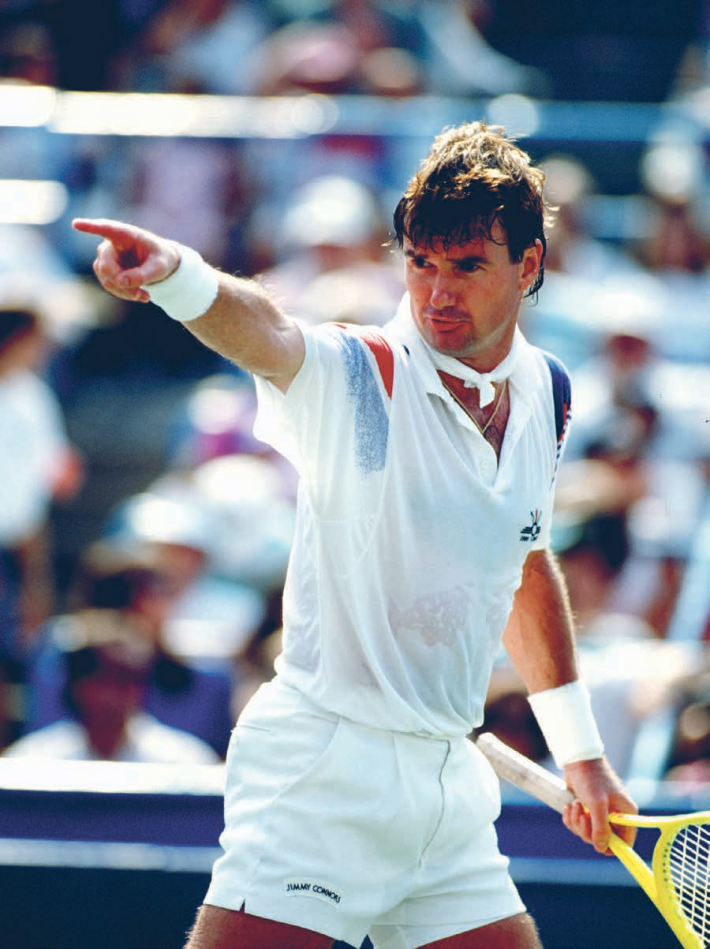
While it was the nadir for McEnroe, it wasn’t the end. After his default, he virtually disengaged from the game for five months. When he returned for Wimbledon, he suffered one of the worst losses of his career, to 129th-ranked Derrick Rostagno in the first round. In a post-match interview with Bud Collins and a semiretired Jimmy Connors, McEnroe admitted that he withdrew from tennis because of his fragile mental state. “I just didn’t feel like I was doing my best and I didn’t really want to go through what happened in Australia again. I would rather not play tennis and let the game go on without me than to continue to play and to put myself in that situation,” he said. “I have no idea what I’m doing on the court right now,” he added. To return to form, he believed, he would virtually have to relearn the game.
A bit more than two months later, McEnroe relearned it well enough to make a last, improbable run to the semifinals at the US Open. There he lost to Pete Sampras, in a four-setter that signaled a permanent changing of the guard in U.S. men’s tennis. Sampras was the latest in a power surge that had made McEnroe’s famous finesse largely irrelevant.
In defeat, though, McEnroe more than redeemed his ignominious default in Australia. His story hadn’t culminated with that embarrassment after all.
On the first day of the 1990 US Open, Joel Drucker was wandering the grounds at Flushing Meadows. The tennis writer had traveled from California hoping to see Jimmy Connors, only to discover that his hero had withdrawn due to a wrist injury. Still, despite his 37 years, his two decades on tour, and his chronic aches and pains, Jimbo wasn’t gone just yet—from tennis, or from the Open. To Drucker’s surprise, he ran into Connors that day, and they shared a taxi to Manhattan. As the cab pulled out, Connors looked at Louis Armstrong Stadium and said, “If I ever get back there, that place is going to rock and roll.”
Nine months later, “if” had turned to “when.” By the middle of the 1991 season, Connors was enjoying an unlikely Indian summer. At Roland Garros, he reached the third round and was serenaded with chants of “Allez, Jeemee!” During a drenched Wimbledon, the tournament was scheduled to play on its middle Sunday for the first time. Connors, naturally, was the star of the raucous “People’s Sunday.” This time the fans began chanting his name before he even arrived on court.
“It moved me,” Connors recalled of the crowd’s support in his memoir, The Outsider. “As in Paris, I felt as though the tournament was bidding me farewell.”
Connors, of course, wasn’t saying farewell to anyone; to him, these were warm-up acts. “I had only one goal in mind: New York,” he said. Since 1978, when he won the first Open at Flushing Meadows, New York had been “my stage.”
“If I can win a match or two,” Connors kept repeating to himself as he carbo-loaded his way to the Big Apple, “I know the crowd will do the rest for me.”
An hour into his ’91 Open, though, the idea of “winning a match or two” sounded like the delusion of an aging champion. In the first round, Connors quickly fell behind two sets and a break to Patrick McEnroe. Instead of chanting his name, fans bolted early, especially those in the corporate boxes around the court. After 20 years of playing in New York, Connors couldn’t let it end like this.
“I’m two sets down, 0–3, 0–40,” Connors said, “when that feeling returns. I’m not letting Patrick McEnroe beat me in my own backyard.”
With one service hold, he sent the diehards in the cheap seats into a frenzy.
Lifted up by “that insane New York energy,” Connors won the final point at 1:35 a.m., then twirled and pointed his index finger toward each of the four corners of the stadium. By the next morning at Flushing Meadows, his victory was already legend; hundreds of people stopped to shake his hand. By the end of week 2, he was back on the cover of Sports Illustrated, and Nightline had devoted an episode to his age-defying antics.
Connors hadn’t just reminded people of how well he could play; he had also reminded them of how he approached the game, with a gusto that tennis’ new generation seemed to lack. When Sampras, the defending champion, claimed after his quarterfinal loss that he was happy to be rid of the burden of being the Open winner, Connors was stunned.
“What? Don’t tell me that!” he said. “Being the US Open champion is what I’ve lived for. If these guys are relieved at losing, something is wrong with the game.”
Connors’ run to the semifinals would reach its peak on Labor Day—his 39th birthday—with his five-set, fourth-round win over Aaron Krickstein. It was a tennis party like no other, and one that broadcasters and fans revisited for years during US Open rain delays.
Again, Connors looked like he had come to the end when he fell behind 2–5 in the fifth. Again, he wasn’t ready to call it quits. Attacking furiously, Connors pushed the match to a decisive tiebreaker. Before the first point, nearly exhausted, he sat down in the corner of the court and spoke into a CBS camera.
“Isn’t this what they paid for?” he told his old friend and fellow roughneck Vitas Gerulaitis, who was calling the match that day. “This is what they want!”
Then, milking the moment, Connors stood up and walked slowly toward the baseline, and back into battle. He had, as he had predicted a year earlier, made that place rock and roll again.
The crowd rose with Connors on that Labor Day in New York. They rose for him, and they rose for the past that he represented. So many of the fans there had been drawn to tennis by the larger-than-life personalities of his era. The year before, they had done the same for McEnroe at Flushing Meadows during his own last-hurrah run to the semis.
Borg would have a tougher go of it. Could the legendary comeback artist pull
off another miracle? That was the sole topic of conversation among the hundreds of people who lined the fences at the Monte Carlo Country Club to get a glimpse of tennis’ original rock star. Spirits rose when Borg’s first, awed practice partners reported that he was as fit and focused as ever. But they plummeted when Boris Becker took his swings with the master and returned with the cold hard truth:
“He hits the ball nice, he hits it clean,” the German said. “But his ball doesn’t have any druck.” Borg’s game was flat; it had no pop left.
Despite a packed house and a hushed audience, Borg was stopped in the first round of the tournament by 52nd-ranked Jordi Arrese. Becker had been right: Everything about Borg was the same, except that he had no druck. Arrese won the first set 6–2. With Borg serving at 3–4 in the second, Honsai rose and called out, “Now, Bjorn, do it now!” But for the Swede, “now” was long ago. The match, the circus in Monte Carlo, and his return to the game were soon over.
Tennis fans were left to confront a melancholy fact: Even Bjorn Borg couldn’t take us all back in time.
Like McEnroe and Connors, Borg had pushed himself to the limit and beyond in pursuit of the new riches that tennis offered in the 1970s and ’80s. But they had always given its fans full value for their dollar, and that’s what they did, in their own imperfect ways, in 1990 and ’91. They gave them what they paid for, and what they wanted, one more time.
Stephen Tignor is a senior writer at Tennis magazine and Tennis. com, and the author of High Strung: Bjorn Borg, John McEnroe, and the Last Days of Tennis’s Golden Age.
Featured in Racquet Issue No. 4
